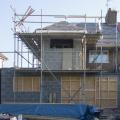Top 5 Concrete Inspection Technologies You Should Know About
When it comes to ensuring the safety, durability and compliance of concrete structures, inspection is not just a best practice—it’s essential. Whether you're dealing with high-rise buildings, bridges, tunnels, or residential slabs, identifying issues before they become costly or dangerous is key.
Traditional inspection methods like visual assessment and core sampling still play a role, but they often come with limitations—think time delays, structural damage, or human error. Fortunately, modern technology is transforming the way we evaluate concrete. From advanced imaging to AI-enhanced data interpretation, these innovations are making inspections faster, more accurate, and less invasive.
Here are the top five concrete inspection technologies you should know about in 2025.
1. Ground Penetrating Radar (GPR)
What it is:
Ground Penetrating Radar at gpr scanning brisbane is a non-destructive testing method that uses electromagnetic waves to create images of what’s below the surface of concrete.
How it works:
GPR sends high-frequency radio waves into the concrete. When these waves encounter materials with different electrical properties—like steel reinforcement, voids or moisture—they bounce back to the surface. A receiver captures these signals and translates them into detailed images.
Why it matters:
- Highly effective for locating rebar, post-tension cables, and conduits before drilling or cutting.
- Helps detect voids, delamination, and moisture ingress.
- Safe, quick, and requires no coring or destructive sampling.
Use case:
Construction companies use GPR to scan slabs before saw-cutting, preventing accidental damage to critical reinforcements.
Pro tip:
Look for a GPR unit with 3D imaging capabilities and real-time display for enhanced accuracy.
2. Ultrasonic Pulse Velocity (UPV)
What it is:
Ultrasonic Pulse Velocity testing is another non-destructive technique used to assess the quality and uniformity of concrete.
How it works:
This method involves sending ultrasonic pulses through a concrete element from a transmitting probe to a receiving probe. The time it takes for the pulse to travel indicates the density and integrity of the material.
Why it matters:
- Quick detection of cracks, honeycombing, or other internal flaws.
- Allows estimation of concrete strength when combined with core sample calibration.
- Great for comparing the quality across different parts of the same structure.
Use case:
UPV is commonly used for quality control in newly poured concrete and ongoing maintenance of existing structures like bridges and columns.
Pro tip:
Ensure proper surface preparation and coupling gel for accurate signal transmission.
3. Infrared Thermography
What it is:
Infrared thermography uses thermal imaging cameras to detect temperature variations on the surface of concrete structures.
How it works:
Defects such as delamination, voids, and moisture accumulation can affect how heat is retained or released by concrete. Thermal cameras pick up these changes, providing a visual map of thermal anomalies.
Why it matters:
- Fast and completely non-invasive.
- Effective for inspecting large surface areas like walls or slabs.
- Can be used from a distance, even via drone for elevated or difficult-to-access areas.
Use case:
Building inspectors often use infrared thermography to assess façade conditions or flat roofs for trapped moisture.
Pro tip:
Best results are achieved during temperature fluctuations—early morning or late afternoon—for optimal thermal contrast.
4. Digital Radiography (X-Ray Imaging)
What it is:
This high-resolution method uses X-rays to penetrate concrete and generate an internal image, similar to a medical X-ray.
How it works:
A radiation source is placed on one side of the concrete, and a digital sensor on the other. The X-rays pass through the material, with denser objects like steel rebars appearing prominently in the resulting image.
Why it matters:
- Extremely accurate for identifying embedded objects and assessing placement depth.
- Allows inspection of complex or thick structural elements that other methods may not penetrate.
- Helpful for forensic investigations or projects requiring high precision.
Use case:
Used in critical infrastructure projects where verifying reinforcement placement is vital for compliance and safety.
Pro tip:
Due to safety concerns, this method should only be carried out by licensed professionals with proper radiation shielding and procedures.
5. AI-Enhanced Image Analysis and Drones
What it is:
Combining drone technology with artificial intelligence (AI) and high-resolution cameras for structural inspections.
How it works:
Drones capture thousands of images of a structure’s surface, especially those that are hard to reach. AI algorithms then analyse the images to detect cracks, corrosion, spalling, and other signs of degradation.
Why it matters:
- Eliminates the need for scaffolding or rope access.
- Provides objective, repeatable analysis with less human error.
- Ideal for high-risk or expansive structures like dams, cooling towers, or multi-storey buildings.
Use case:
Councils and asset managers use drone + AI systems for regular inspections of bridges and public buildings, improving safety while reducing costs.
Pro tip:
Choose a provider that uses machine learning models trained on thousands of defect images to ensure reliable analysis.
Honourable Mentions
- Half-Cell Potential Mapping: Evaluates the likelihood of corrosion in steel reinforcement by measuring electrical potential differences. It’s particularly useful for maintenance planning in marine or exposed environments.
- Laser Scanning (LiDAR): Captures precise 3D models of concrete surfaces and structures. Ideal for deformation analysis, volume estimation, and as-built verification in complex or heritage projects.
- Schmidt Hammer Testing: A simple, portable tool for estimating surface hardness and probable compressive strength of concrete. Useful for quick assessments in the field, especially when destructive testing isn’t feasible.
- Acoustic Emission Testing: Monitors sound waves generated by cracks or internal stress in real-time, making it great for ongoing structural health monitoring in bridges and tunnels.
Final Thoughts
As concrete infrastructure continues to age—and as construction standards become more stringent—advanced inspection technologies are playing a pivotal role in how we build and maintain our environment. Whether you're in construction, civil engineering, asset management, or facilities maintenance, staying up to date with these innovations is vital for risk reduction and long-term performance.
Modern concrete inspection methods not only reduce human error and improve accuracy, but also support safer, more sustainable infrastructure. With these tools in your kit, you can make smarter decisions, extend asset life, and ensure compliance with Australian building standards.
So, whether you’re planning a new build or managing existing assets, keep these five technologies in mind. They might just save you time, money—and a whole lot of concrete headaches.
More to Read:
Previous Posts:


